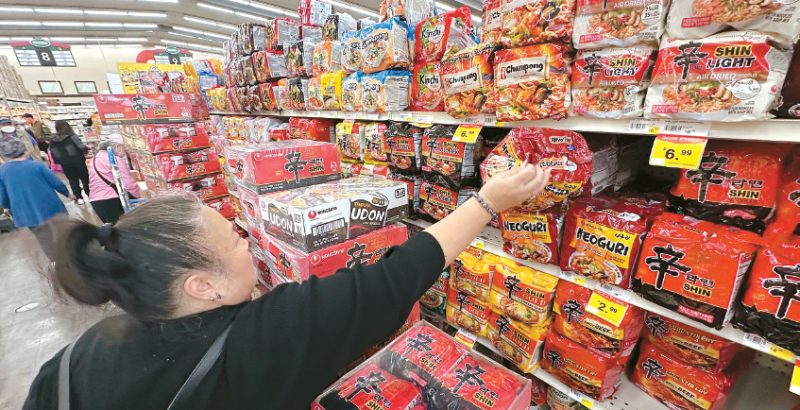South Korean agricultural and fishery food exports to the United States reached a record high of $1.52 billion through the third quarter of this year. The most notable increase was in processed food products, including ramen and kimbap.
According to Korea Agro-Fisheries and Food Trade Corporation (aT), Korean food exports to the U.S. increased by 18.7% year-on-year through the third quarter of this year, showing solid growth despite the persistent economic downturn.
“The cumulative exports of instant noodles, processed rice products, and ice cream have surpassed the total exports of last year by September,” said Min Ho Kim, president of aT LA, adding, “If this momentum keeps up, we expect that to reach $2 billion this year.” The top-performing snack category recorded $254.6 million in exports, up 37.2% year-over-year. The surge in sales of instant rice and Costco’s distribution of snacks reportedly drove the growth.

The second-highest export category, seaweed, grew 25.3% to $160.1 million. Ramyun noodles showed the highest increase, jumping 62.5% year-on-year to $158.0 million.
“Ramyun exports to the U.S. have risen the most since last year, but considering local production, the market for Korean instant noodles is much larger,” said Kim, analyzing the impact of the rapid increase in ramen consumption among non-Koreans.
Rice-processed foods have also been steadily increasing in exports as frozen kimbap, tteokbokki, rice cakes, and rice wine have become popular in the non-Korean market. It grew 58% year-on-year to $126.45 million, second only to ramen.
Ramyun, processed rice foods, and ice cream are driving strong growth in exports to the U.S., with cumulative exports from January through September exceeding last year’s total. Through September this year, the cumulative export value of instant noodles ($158.0 million) exceeded the total value of exports to the U.S. last year ($126.6 million).
In the case of ice cream, Binggrae’s Melona, which was unable to deliver supply to many stores including Costco due to logistics disruptions during the pandemic, has significantly increased the number of supply channels, leading to a corresponding increase in exports.
Compared to last year’s export performance by product to the U.S., exports of gochujang, coffee, and citron products have fallen, while sauces, ice cream, ginseng, and liqueurs have newly entered the top list. Sauce, ice cream, and ginseng grew 25.3%, 27.5%, and 26.7% year-on-year, respectively.
Ginseng exports were sluggish last year, but have recovered quickly this year. Liqueur, including fruit-flavored soju, overtook original soju with a 33.3% year-on-year increase to $19.32 million, thanks to distribution at major retailers such as Target and Total Wine.
“The record high export value to the U.S. is proof that Korean food consumption continues to grow even as inflation has slowed the economy,” said Kim, ”and the brand value of Korean food is also increasing as they enter local markets with loyal customers such as Trader Joe’s and Costco.”
BY EUNYOUNG LEE, HOONSIK WOO [lee.eunyoung6@koreadaily.com]




